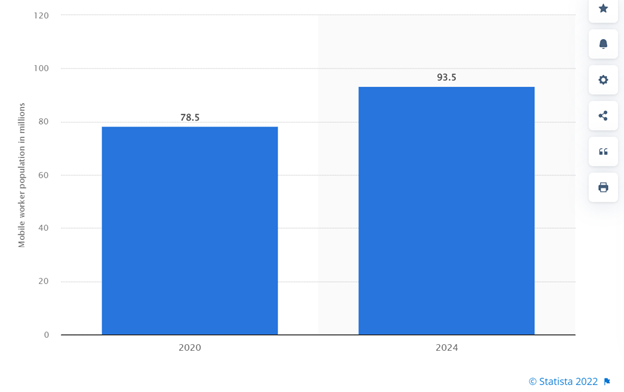Hiring the right people is crucial for your business’ success. Lacking firepower needed to get the right people in the right seats? It’s time to look into your talent recruitment process and new hire management.
Despite having an established HR team, many companies still fail to recruit the right people to join their ranks. Recruiting top talent at the right time is tricky, but it is crucial to an organization’s success.
Interestingly, this issue remains despite the number of individuals without a job. According to the Job Openings and Labor Turnover Survey (JOLTS) of the US Bureau of Labor Statistics, monthly job openings for several industries—including professional and business services—reached their highest levels in 2021.
Companies aiming to be successful should consider taking a different approach by looking at new hires as key contributors to the future of their company. This means finding the right people who can help boost your business.
3 reasons you’re not finding the right talent
1. Unconscious bias
It’s human nature to form biases about the people we interact with, and recruiters and hiring managers are no exception—they filter candidates by forming an opinion based on first impressions. Some may even prefer one candidate over another for personal reasons instead of professional ones.
In the hiring process, this bias can begin to develop even before meeting with a candidate. Applicants’ resumes, names, addresses, and experience can all influence an HR professional’s opinion and hiring decisions.
It’s a common problem—in 2020 alone, the US Equal Employment Opportunity Commission (EEOC) processed 67,448 charges of workplace discrimination.
The graph shows the state distribution of the charges.
Image Source
If bias plays a part in hiring, HR teams may lose an opportunity to hire the best person for the position.
2. Not using technology
With the increasing adoption of digital solutions, hiring teams still relying on outdated methods are missing out on top talent. Some HR practitioners may find it hard to let go of the tried and tested processes and adopt new hiring technologies. Others may lack the time and knowledge to apply these new hiring methods.
Not only is manually sorting CVs inefficient and ineffective, but candidates have also evolved. The top talent isn’t out there reading newspapers to look for a job; they’re online, using online hiring platforms that bring them global opportunities.
3. No clear business strategy
One of the most common mistakes hiring teams make is recruiting blindly—not having a specific vision of what they’re looking for in a candidate. This can happen when the business itself doesn’t have a clear business strategy and has not defined the need and role of the recruit.
How to tackle talent acquisition pitfalls
These issues may be significant, but they are not insurmountable. Here are some strategies your organization can employ to address these recruitment issues.
Use AI in your hiring process
Businesses can improve their hiring processes with the right software. For instance, removing unconscious bias is possible by using applicant tracking software powered by artificial intelligence (AI).
AI can help avoid clouded judgment by filtering resumes based on job descriptions, skills, and credential-based evaluation. It narrows the number of candidates, allowing recruiters to insert the “human” in HR by matching candidates from a smaller, matched pool to the company culture.
Think about all areas of your business
Running a business requires a business plan that covers marketing, technology and equipment, operations, finance, strategy, and human resources. Business planners must define and understand their goals so they can communicate staffing needs to the HR team. The HR department must then center the company’s strategy when considering job candidates.
Reconsider your demands
You may be missing out on hiring the right talent for your organization simply because some of your demands are unreasonable. Assess your job description and requirements to ensure they are within industry standards. For example, some postings are looking for an entry-level applicant but require them to have five years of experience and an advanced degree. This stipulation will disqualify many well-suited candidates
.
While it’s important to be clear and specific about the skills and attributes you require, they must be realistic. Remember, if a candidate is a good fit, you can always upskill them when the need arises.
Does the right talent ask if they can work from home? Why not be flexible enough to grant this work setup if it will bring more benefits to your company? You can use time-tracking software to monitor the working hours of your remote employees.
It might be the sign you’re waiting for to embrace mobile employees, considering that the number of mobile workers is expected to rise to 93.5 million within the next two years.

Do talent acquisition right with the right technology
Implementing technology in your HR processes is a necessity if you want to stand out in a highly competitive job market. Assess what strategy and technology best suits your business goals.
Author bio
Dean Mathews is the founder and CEO of OnTheClock, an employee time tracking app that helps over 15,000 companies all around the world track time.
Dean has over 20 years of experience designing and developing business apps. He views software development as a form of art. If the artist creates a masterpiece, many people’s lives are touched and changed for the better. When he is not perfecting time tracking, Dean enjoys expanding his faith, spending time with family and friends, and finding ways to make the world just a little better



